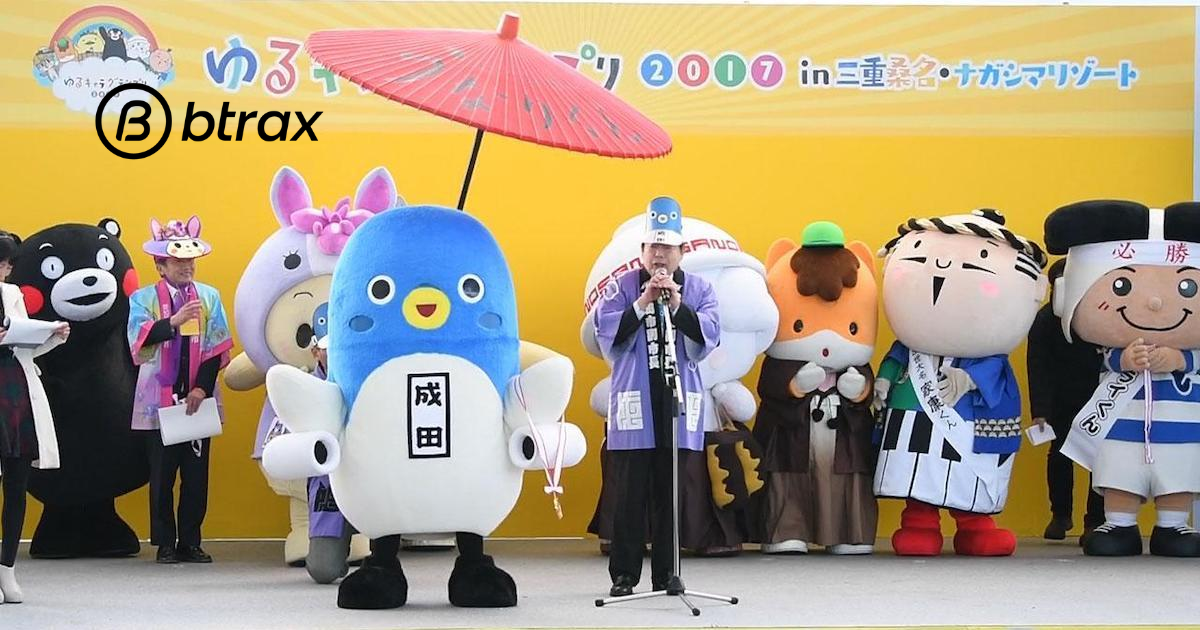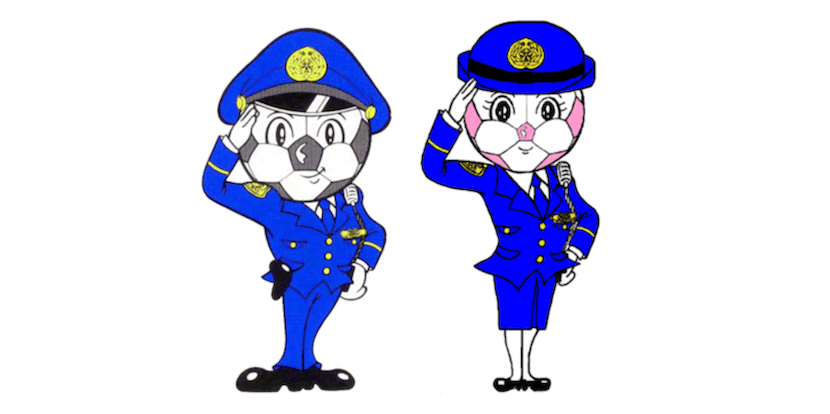
Btrax Design Company > Freshtrax > Japanese Yuruky...
Japanese Yurukyara: The Cute and Quirky Mascots Taking Over Japan
Japan has created some of the most beloved characters in entertainment, many of which have become internationally famous! Characters like Mario, Hello Kitty, and Pikachu are known for their cuteness and the franchises that they support; but they aren’t the only characters that you’ll find. If you’ve ever been to Japan, then you may have noticed that cute characters are almost everywhere you look.
‘Yurukyara,’ which translates directly as “loose characters,” are a kind of mascot character that is used across Japan to serve as honorary PR managers for a wide variety of goods and services.
All across the country, these cute and cuddly characters have become a regular part of Japanese culture and branding!
Yurukyara you say?
Yurukyara serve as marketing and promotional tools. Yurukyara often have ties to specific areas and may pay homage to unique traditions, folklore, and local products of the areas they represent.
From companies and brands to government offices, police stations and prisons, entire towns or prefectures -there are Yurukyara mascots for nearly everything imaginable. I have to admit, I was surprised when I walked past the local police department and saw two soccer ball-headed police characters decorating a wall in an otherwise serious office.

Shizuoka Police Department Yurukyara. By: Shizuoka Police Department
Yurukyara, a history
The history of Yurukyara began in the early 2000s when local governments and organizations began using these mascots to promote tourism and local products. Many characters are made of a hodgepodge of local products stuck together in an interesting and sometimes random way.
In 2010, a competition known as the Yurukyara Grand Prix was established, lighting a fire under small town design and PR teams to create popular mascots that could draw interest to their towns.

Victorious Yurukyara Celebrating at the Yurukyara Grand Prix. By: Kumamon Official Website
Online voters choose the top three Yurukyara mascots each year who win prizes and nationwide fame. The rules? Any given mascot had to represent a local government, company, or organization. In addition to this, the character needed to have a unique design and backstory.

Yurukyara Grand Prix Competition Winners 2011 to 2019. By: スポニチ
Yurukyara mascots have become so widespread that almost every small town in Japan has its own Yurukyara mascot. The character for Kumamoto, Kumamon, for instance has become internationally famous!

Picture of Kumamon posing in front of Kumamoto Castle in their home town of Kumamoto City. By: Asahi Shimbun
Small Town Yurukyara
The town where I taught English on the Japan Exchange and Teaching (JET) program, Yoshida-cho (Yoshida Town), has a character known as Yoshikichi who has representations of local products such as eels, lettuce, the local castle, and several other features. Yoshikichi, like many thousands of other Yurukyara, has yet to become internationally famous.

Yoshikichi, the Yurukyara of Yoshida Town going for a stroll. By: Yoshida Town
You can even find these characters represented in local school lunches!

Special School Lunch Featuring Yoshikichi. By: SBSnews6
Watch the video to see how excited students were to have the cute town character featured in their school lunch. The croquette not only showed an image of the town Yurukyara, but also was made of a local specialty known as ‘shirasu’ a type of small sea fish that is a local product of the town. Continue watching and you’ll see the character make an appearance at the school, truly a special day!
Having eaten this myself, I can say that the cute character definitely added to the delicious meal.
While most small town mascots like Yoshikichi remain relatively unknown, they still bring value as an expression of regional pride and identity!
Yurukyara in America?
While America may not have a Yurukyara culture that is exactly the same as Japan, there are some similarities. Schools and sports teams will often have a mascot, and many U.S. brands have spokespersons. These characters are used as tools to promote brands in a very similar way to Yurukyara.
American school mascots promote sports teams and school spirit in the same way that small town Yurukyara might promote town pride.

Florida Gators mascot at a University of Florida football game. By: Florida Gators
Brand spokespersons function to create brand awareness. Think of the GEICO Gecko, the Aflac Duck, or the U.S. Forest Service’s Smokey Bear, who are among some of the most well known animated spokes-characters.

Smokey Bear who’s Forest Fire Prevention Campaigns have been running since the 1940s. By: Smokey Bear
Although not as widely used in the U.S., brand-associated characters can gain popularity and fans in a unique way.

Aflac Duck Advertisement by Aflac Japan. By: ニュースイッチ
Should American brands use brand characters when Localizing to Japan?
There are a variety of ways that U.S. brands might effectively localize their products and brand to appeal to Japanese consumers, utilizing cute characters may be one of them!
The U.S. insurance provider, Aflac, entered the Japanese market in 2003 and has become widely known in Japan, thanks largely to the Aflac Duck! As many as 9 in 10 Japanese people can recognize the iconic character.
In the year 2000, the Aflac Duck made their debut to U.S. audiences with little fanfare. Years later when Aflac entered the Japanese market where the sassy duck quickly became a favorite among the top advertising icons.
Some U.S. brands have created original characters to appeal to Japanese consumers. The Expedia Bear is one such case where a character was created specifically for the Japanese audience.

Expedia Bear. By: Expedia Japan
If not for the english text in the top left corner, most non-Japanese wouldn’t recognize the above ad as an ad for Expedia!
There is no guarantee that an original character will succeed in the Japanese market, but it is a unique aspect of the Japanese market and certainly worth a try for any brand looking to appeal to Japanese consumers.
Conclusion
Using brand-associated characters may not be right for every brand, but it is certainly a unique and creative tool that, if used correctly, can drive brand awareness and even create a fan base!
Who is your favorite animated spokesperson, brand character, mascot, or Yurukyara that you’ve seen in marketing?
Contact us to find out how we can help you and your company succeed.







